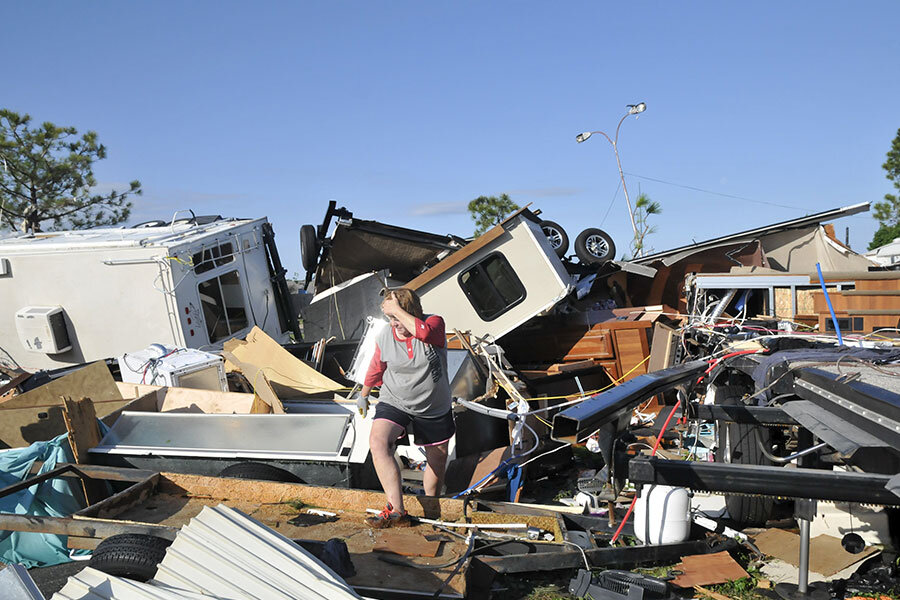Forecasters predict more heavy storms to hit southern Plains states
Loading...
| Oklahoma City
Communities in several southern Plains states set to work cleaning up Thursday after a night of storms that spawned 51 tornadoes, assessing the damage under sunny skies but with the threat of even worse weather on the horizon.
The storms strafed northern Texas, Nebraska, and Kansas on Wednesday and early Thursday but reserved their worst for the Oklahoma City area, where at least a dozen people were injured in a trailer park and where a 43-year-old woman was killed. Skylyna Stewart apparently took cover in an underground storm shelter and drowned when it was deluged by floodwater, police Sgt. Gary Knight said.
While residents assessed the damage early Thursday afternoon, a large cluster of thunderstorms was developing in western Oklahoma that was expected to bring hail and damaging winds to the state. Meanwhile, storms that could produce more powerful tornadoes could rake the Plains on Friday and Saturday, said meteorologist John Hart of the Storm Prediction Center in Norman.
"The conditions are right; it's the right time of year," Hart said. "There are just a lot of things that make you think over the next three days there will probably be big tornadoes across the southern Plains."
An area covering southern Kansas, western Oklahoma and parts of North Texas would likely bear the brunt of the storms Friday and Saturday.
The likelihood of another round of storms so soon left some residents wondering whether they should wait to begin cleaning up.
Oklahoma Gov. Mary Fallin declared a state of emergency for 12 central Oklahoma counties. The hardest hit appeared to be the rural community of Bridge Creek, about 30 miles southwest of Oklahoma City, where 25 homes were destroyed.
Flooding remained a concern throughout the region, after 5-8 inches fell in many areas, said Forrest Mitchell, a meteorologist with the National Weather Service in Norman.
The 7.1 inches that fell in Oklahoma City was the third highest rainfall for any day on record, dating back to 1890, said state climatologist Gary McManus.
Heavy damage also was reported in Norman and Oklahoma City. A hotel and mobile home park along Interstate 35 in south Oklahoma City were heavily damaged by a rain-wrapped tornado that dropped from the sky after dark. Oklahoma City spokeswoman Kristy Yager said crews were still conducting preliminary damage assessments, but more worried about ominous storms heading toward the state.
"We're concerned about the weather that's coming in," she said. "About receiving more rain tonight, Friday and Saturday. It's important that everybody stay weather aware and have a plan."
In Norman, a large piece of a metal roof torn from the gymnasium at Community Christian School was found wrapped around a light pole at a baseball field more than 100 yards away. Jim Ohsfeldt, whose wife is principal of the school, spent Wednesday morning with student volunteers picking up soggy insulation scattered across the parking lot.
"They say it's going to hit again, but I think it's going to go north or south and pick on somebody else," Mr. Ohsfeldt said.







